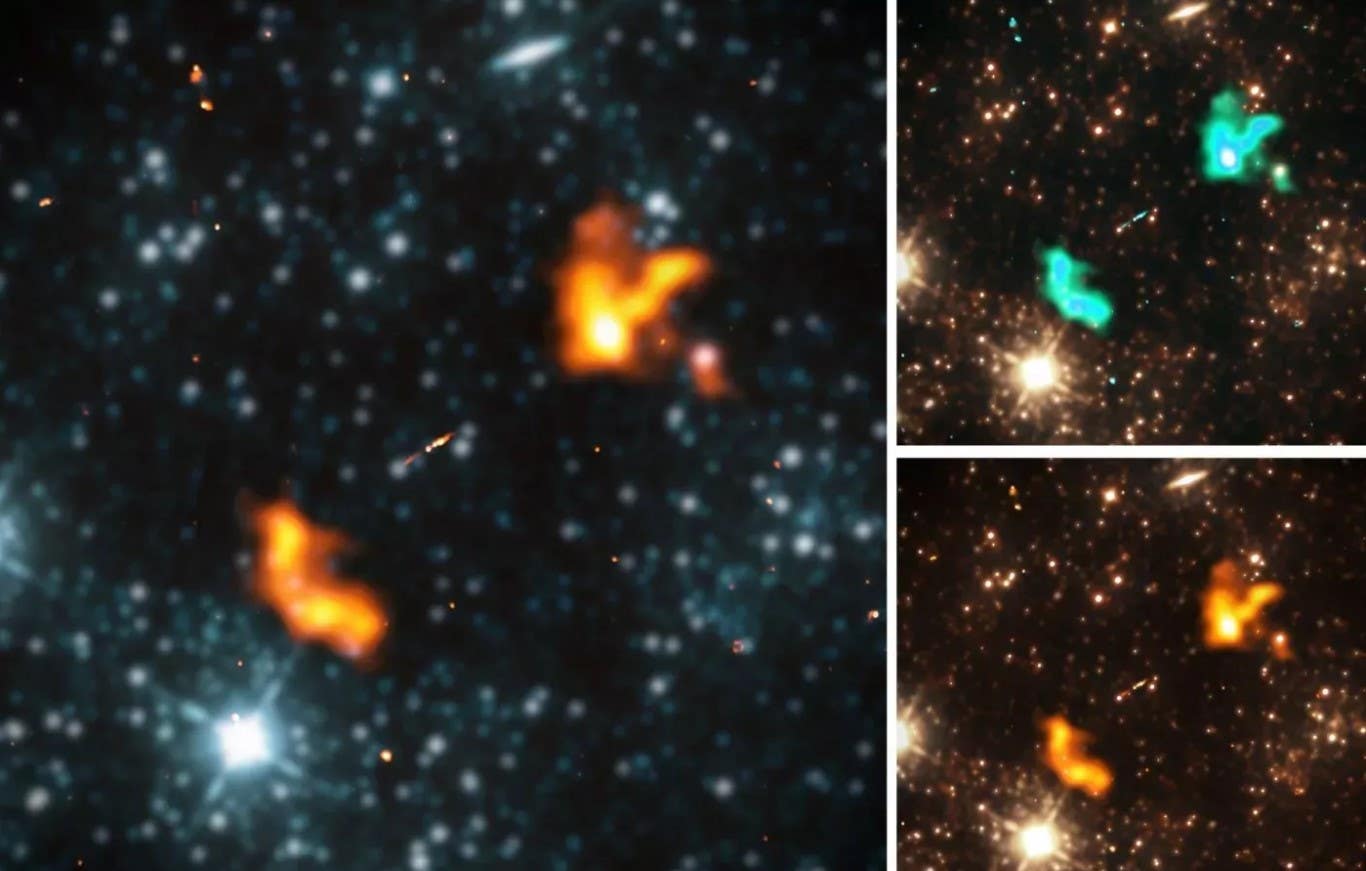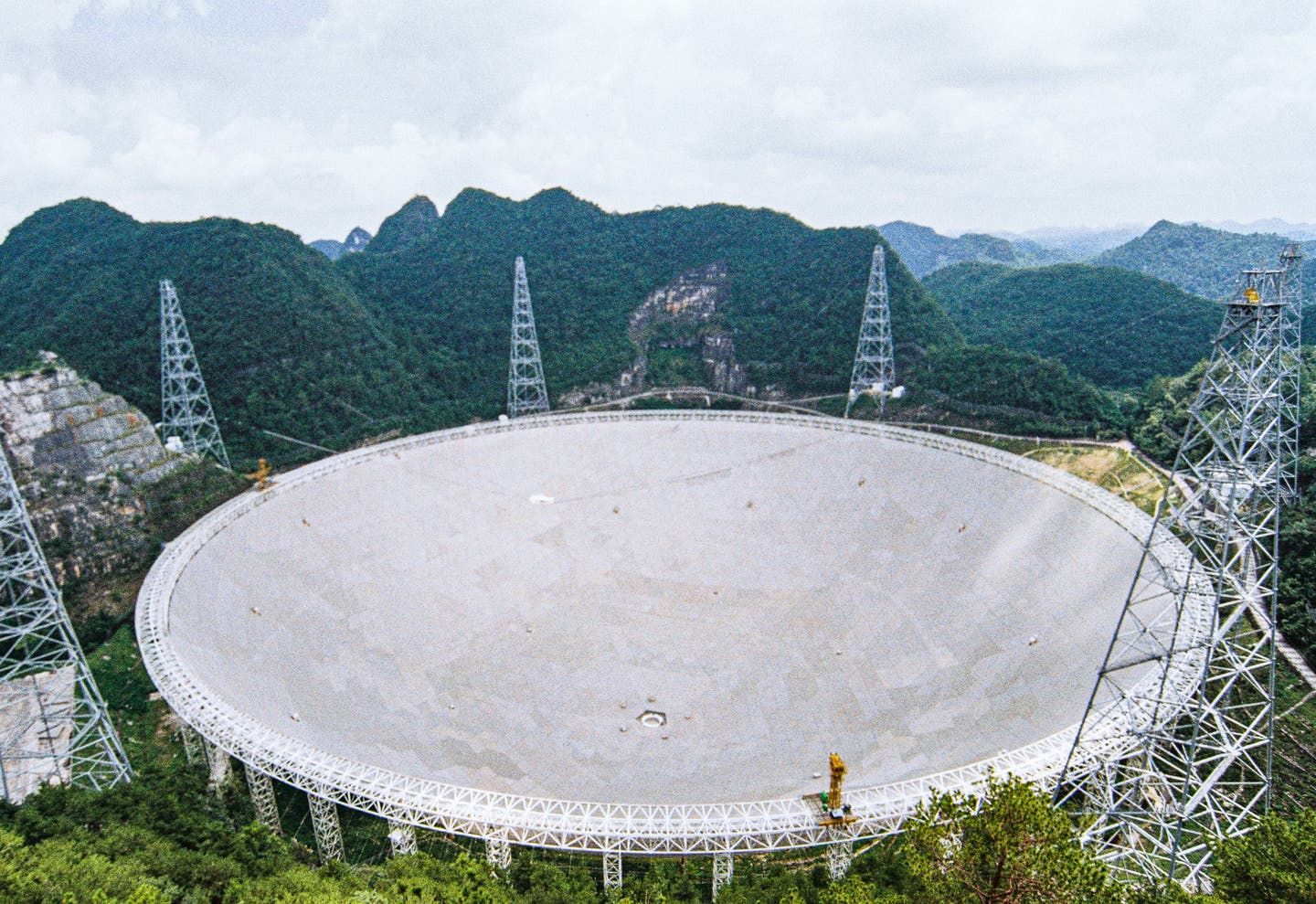Largest galaxy ever found discovered is 150x larger than the Milky Way
The galaxy, dubbed Alcyoneus, is a large radio galaxy that spans 16.3 million light-years or roughly 150x the span of the Milky Way galaxy.

[Feb 16, 2022: Martijn Oei and Tiffany Winfrey]
Three images of the largest galaxy ever discovered by astronomers in infrared, radio, and optical wavelengths. The galaxy in question Alcyoneus, spans a whopping 16.3 million light years. (CREDIT: Martijn Simon Soen Liong Oei/LOFAR)
Astronomers have discovered the largest galaxy, around 3 billion light-years from Earth.
The galaxy, dubbed Alcyoneus, is a large radio galaxy that spans 16.3 million light-years (5 megaparsecs) or roughly 150x the span of the Milky Way galaxy at about 105,000 light-years across. Alcyoneus is also home to a supermassive black hole with a mass 400 million times that of the Sun.
While radio galaxies remain a mystery in an already enigmatic cosmos, scientists anticipate that this finding will provide additional information about them and other media wandering in space.
The research, titled "The Discovery of a Radio Galaxy of at Least 5 Mpc," has been accepted for publication in Astronomy & Astrophysics.
Radio Galaxies Explained
Radio Galaxy is another type of Active Galaxy Nuclei, Universe Guide said. They earn the moniker because they produce more light at radio wavelengths than visible light. They were discovered by chance in the 1940s.
Radio waves are invisible to the naked eye because humans are not sensitive to those things. To detect them, astronomers need to utilize specialized equipment.
People perceive a regular galaxy when we gaze at a Radio Galaxy. Other experts can observe streams of particles coming from their centers using a particular telescope or equipment.
Radio galaxies are almost often elliptical galaxies, although NGC 4151 in the constellation Canes Venatici is a notable spherical galaxy that is a radio galaxy. A galaxy may be of several types, which is why it's sometimes referred to as a Seyfert galaxy.
Related Stories
How Astronomers Found Alcyoneus Monster Galaxy
The Alcyoneus galaxy was found using data from NASA's Wide-field Infrared Survey Explorer satellite observatory and the Europe-based LOw Frequency ARray (LOFAR), a network of roughly 20,000 radio antennas distributed in 52 places throughout Europe.
Alcyoneus is located in an area of space with a lower density than typical, which may allow it to expand - or indicate that interactions with the cosmic web influence the object's development.
The researchers found that the galaxy is a standard elliptical galaxy but is roughly 240 billion times more massive than the Sun.
According to the research, these factors can reveal additional information about what is driving the proliferation of radio wave-producing lobes.
The researchers think that the galaxy is expanding because it is located in an area with a lower density than typical.
The researchers wrote: "Beyond geometry, Alcyoneus and its host are suspiciously ordinary: the total low-frequency luminosity density, stellar-mass and supermassive black hole mass are all lower than, though similar to, those of the medial giant radio galaxies."
"Thus, very massive galaxies or central black holes are not necessary to grow large giants, and, if the observed state is representative of the source over its lifetime, neither is high radio power," the researchers added.
“The mission is exciting because Psyche is such a bizarre and mysterious thing,” Nichols-Fleming said. “So anything the mission finds will be really important new data points for the solar system.”
Note: Materials provided above by Martijn Oei and Tiffany Winfrey. Content may be edited for style and length.
Like these kind of feel good stories? Get the Brighter Side of News' newsletter.
Tags: #New_Discoveries, #Astronomy, #Space, #Galaxy, #Black_Hole, #Radio_Telescope, #Milky_Way, #Science, #Research, #The_Brighter_Side_of_News



